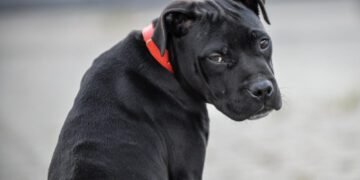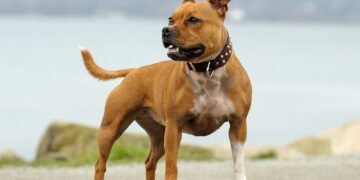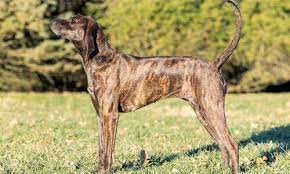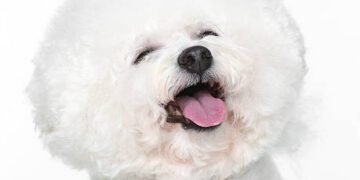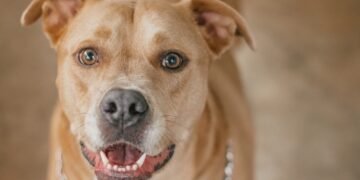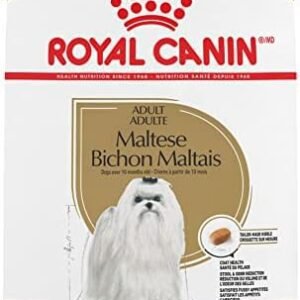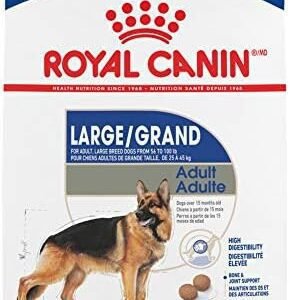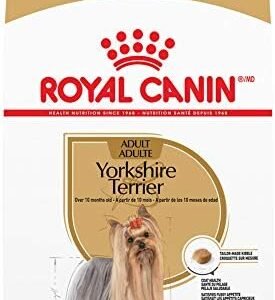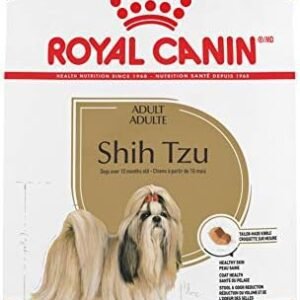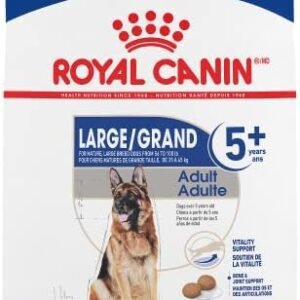Introduction:
In the vast tapestry of dog breeds, one stands out with regal majesty—the Hovawart. Originating from Germany, this breed encapsulates strength, intelligence, and unwavering loyalty. As we embark on a journey to unravel the intricacies of the Hovawart, we’ll discover what makes this canine companion a stellar choice for enthusiasts.

Hovawart Overview Table:
| Hovawart Characteristic | Information |
|---|---|
| Height | 25.5 to 29.5 inches |
| Weight | 55 to 90 pounds |
| Life Span | 10-14 years |
| Good With | Families, Active Individuals, Children |
| Temperament | Devoted, Intelligent, Protective |
| Intelligence | Highly Intelligent |
| Shedding Amount | Moderate |
| Grooming | Regular grooming required |
| Exercise Needs | High |
| Energy Level | High |
| Barking Level | Moderate to High |
| Drool Amount | Low |
| Coat Length/Texture | Long, Dense, Weather-Resistant |
| Colors | Black, Black & Gold, Blond |
| Patterns | Golden Retrieve |
Now, let’s delve into the remarkable qualities that place the Hovawart among the elite breeds.
Table of Contents
The Majesty of the Hovawart:
Referred to as the “Farm Watchdog” in Germany, the Hovawart boasts a grand stature and a temperament that befits its historical roles. Beyond being a pet, this large and robust breed is a dedicated family member with sharp intellect and protective instincts.
Size and Stature:
Ranging from 55 to 90 pounds, the Hovawart’s impressive size is a testament to its history as a guardian and a working dog. Their well-proportioned build showcases strength and agility, making them proficient in tasks from guarding homesteads to excelling in agility competitions.
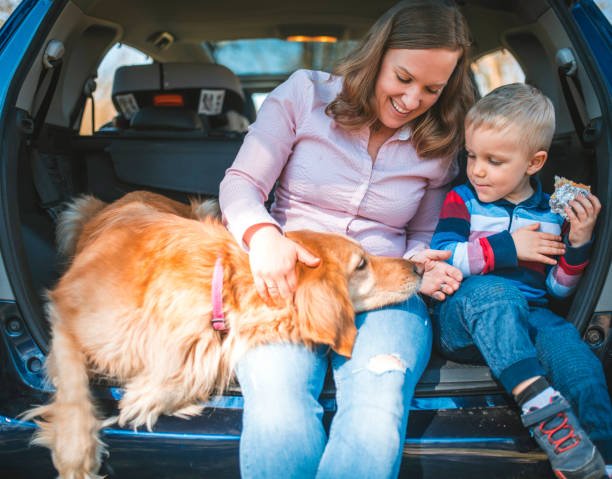
Temperament and Intelligence:
Known for unwavering loyalty, Hovawarts are more than just pets—they are devoted companions. Their intelligence is a standout trait, evident in quick problem-solving abilities and a keen understanding of their owner’s needs. This intelligence makes them highly trainable, excelling in obedience training and tasks that challenge their sharp minds.
Family-Friendly Nature:
While their protective instincts are robust, Hovawarts exhibit a gentle and affectionate side, especially towards their human family. This breed is renowned for being excellent with children, forming strong bonds and actively participating in family activities.
Selecting the Right Breed:
Choosing a dog breed should align with your lifestyle, and the Hovawart offers a compelling option for those seeking a loyal and versatile companion.
Exercise and Energy Requirements:
Hovawarts thrive in environments that allow them to expend their high energy levels. Regular exercise, including vigorous walks, play sessions, and mentally stimulating activities, is essential to keep them physically fit and mentally engaged.
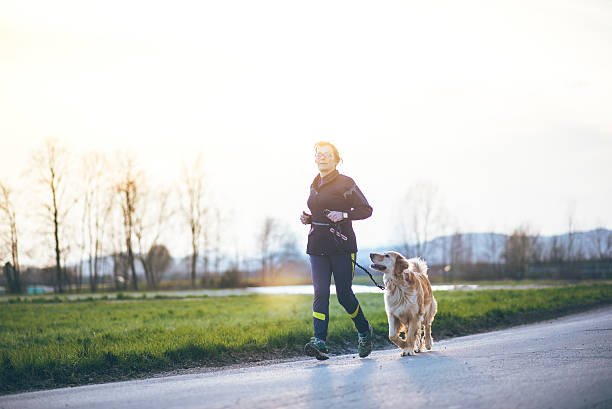
Grooming Needs:
With their long, dense, weather-resistant coat, Hovawarts require regular grooming to maintain optimal health. Brushing several times a week helps prevent matting and ensures their coat remains in top condition. Routine ear cleaning and nail trimming contribute to their overall well-being.
Hovawart: A Heritage of Strength and Utility
Historical Significance:
Understanding the Hovawart necessitates a glimpse into its historical roots. Originating in medieval Germany, this breed was selectively developed for its guarding prowess and versatility on farms. The name “Hovawart” itself translates to “Guardian of the Homestead.”
Guardian Instincts:
The Hovawart’s historical role as a guardian is ingrained in its temperament. They exhibit a natural protective instinct, making them vigilant and reliable guardians of their home and family.
Utility on Farms:
Beyond their role as protectors, Hovawarts showcased versatility on farms. From herding livestock to pulling carts, their strength and intelligence made them indispensable working partners for farmers.
Evolution of the Breed:
Over centuries, the Hovawart evolved, maintaining distinctive characteristics while adapting to changing societal needs. Today, this breed’s heritage of strength and utility is evident in its balanced temperament and well-rounded abilities.
Caring for Your Hovawart Companion
Nutrition:
Ensuring a Hovawart’s well-being begins with a balanced and nutritious diet. High-quality dog food, tailored to size, age, and activity level, provides essential nutrients for optimal health.
Regular Veterinary Check-ups:
Routine veterinary check-ups are crucial for monitoring overall health. Regular vaccinations, dental care, and preventive measures for common breed-specific health concerns contribute to a long and healthy life.
Training and Socialization:
Hovawarts thrive on positive reinforcement training. Early socialization exposes them to various environments, people, and animals, shaping a well-mannered and well-adjusted companion.
Hovawart: A Breed Worth Celebrating
In conclusion, the Hovawart is a testament to the harmonious blend of strength, intelligence, and devotion. Its rich history, coupled with modern adaptability, makes it a remarkable choice. Whether a guardian, family pet, or versatile working partner, the Hovawart leaves an indelible mark on those fortunate enough to welcome them into their homes.
Breed History and Origin:
Exploring Their Roots:
The Hovawart’s journey through history is a fascinating tale of selective breeding and adaptation. Originating in medieval Germany, this breed’s development was influenced by various canine companions that played pivotal roles in shaping its distinctive characteristics.
Breeds in Formation:
The Hovawart’s ancestry can be traced back to a blend of breeds that excelled in specific traits. The Leonberger, Newfoundland, and Kuvasz are among the contributors to the Hovawart’s genetic makeup. The Leonberger’s majestic presence, the Newfoundland’s water-loving nature, and the Kuvasz’s protective instincts all left their mark on the evolving Hovawart.
Working Dog Heritage:
Being a farm watchdog required a specific set of skills. The Hovawart’s predecessors were selected for their ability to guard homesteads, work with livestock, and navigate the challenges of farm life. These working dogs laid the foundation for a breed that would become known as the “Guardian of the Homestead.”
Notable Traits:
The Hovawart stands out among dog breeds due to several distinctive traits that have been carefully preserved through generations.
Robust Guardian Instincts:
The breed’s historical role as a guardian is deeply ingrained in its temperament. From early on, Hovawarts exhibited a natural protective instinct, making them reliable guardians of both property and family. This trait, honed through centuries of selective breeding, contributes to the breed’s reputation as a steadfast protector.
Adaptability and Versatility:
The Hovawart’s versatility is a testament to its adaptive nature. From herding livestock to pulling carts, this breed showcased its ability to perform a range of tasks on the farm. Over time, this adaptability has translated into a breed that can seamlessly integrate into various roles within a modern family, from loyal companion to reliable working partner.
Relevance of Origin:
Understanding the Hovawart’s origin is key to appreciating its unique characteristics and behaviors exhibited today.
Environmental Adaptations:
The medieval German landscape, with its farms and homesteads, shaped the Hovawart’s physical and mental attributes. The breed’s robust build, weather-resistant coat, and high energy levels were essential for navigating the diverse tasks required on the farm. While today’s Hovawarts may not be working on traditional farms, these adaptations remain integral to their well-being.
Historical Context:
The Hovawart’s name itself, translating to “Guardian of the Homestead,” reflects its historical significance. In medieval times, a reliable and versatile working dog was indispensable for the well-being of farmsteads. This historical context underscores the breed’s enduring qualities as a guardian and a devoted companion.
Breed Evolution:
Over the centuries, the Hovawart has evolved while maintaining the core characteristics that define the breed.
Selective Breeding:
Breeders played a crucial role in shaping the Hovawart’s evolution. Selective breeding aimed to enhance desirable traits while maintaining the breed’s working capabilities. This careful curationensured that the Hovawart retained its strength, intelligence, and adaptability across generations.
Modern Roles:
While the Hovawart’s historical roles on farms are less prevalent in contemporary society, the breed has found new avenues to showcase its skills. From being a loyal family companion to participating in dog sports and activities, the Hovawart continues to adapt to the changing needs of its human companions.
In essence, the Hovawart’s history and origin provide a rich tapestry of traits and characteristics that define the breed today. From its working dog heritage to its adaptive nature, the Hovawart remains a testament to the enduring qualities shaped by centuries of careful breeding and historical relevance.
Understanding the Hovawart Breed’s Traits:
The Hovawart is a breed that captivates with its majestic appearance and endearing personality. To truly appreciate this canine companion, let’s delve into the physical characteristics, temperament, environmental needs, and common behavioral traits that define the Hovawart breed.
Physical Characteristics:
Size:
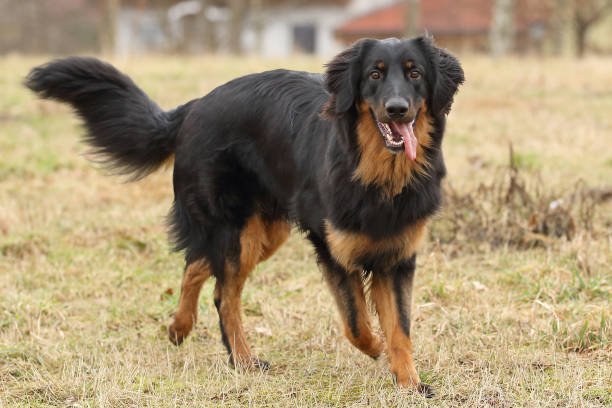
The Hovawart is a large breed, with males typically ranging from 25.5 to 29.5 inches in height at the shoulder, and females slightly smaller. Their weight falls in the range of 55 to 90 pounds. This substantial size contributes to their historical roles as guardians and working dogs, giving them the strength and presence necessary for these tasks.
Coat Type and Color:
The Hovawart’s coat is one of its defining features. It is long, dense, and weather-resistant, designed to provide protection in various climates. The coat comes in three distinct colors: black, black & gold, and blond. These color variations, along with the coat’s texture, give the Hovawart a striking and regal appearance.
Distinguishing Features:
While the Hovawart’s overall appearance is harmonious and balanced, there are subtle features that contribute to their unique charm. Their expressive eyes convey intelligence and a gentle nature. The ears are medium-sized and drop, framing the face in a way that complements their attentive expression.
Temperament Overview:
Suitability as Family Pets:
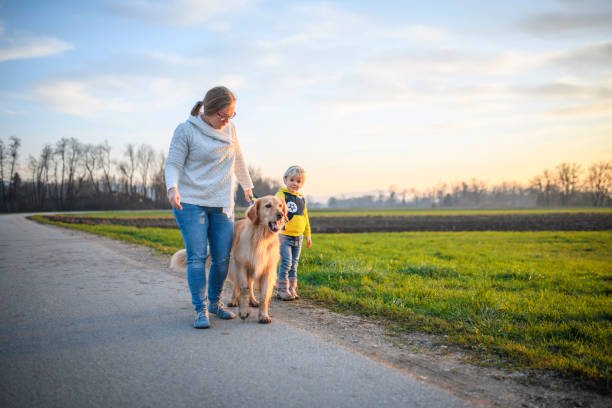
The Hovawart’s temperament makes it an excellent choice for families seeking a loyal and affectionate companion. Their devotion to their human family is unparalleled, and they often form strong bonds with all members, including children.
Interaction with Children:
Hovawarts are known for being good with children, displaying a patient and gentle demeanor. Their protective instincts extend to the younger members of the family, making them reliable and watchful companions. However, as with any large breed, supervision is essential to ensure positive interactions.
Compatibility with Other Pets:
While Hovawarts can coexist peacefully with other pets, early socialization is crucial. Their protective nature may manifest as a watchful eye over smaller animals, but with proper introductions and training, they can integrate well into multi-pet households.
Environment Needs:
Space Requirements:
Given their size and energy levels, Hovawarts thrive in environments that provide ample space for physical activity. A house with a fenced yard is ideal, allowing them to engage in play and exercise. Living in an apartment is possible with dedicated daily walks and play sessions to meet their exercise needs.
Temperature Sensitivity:
The Hovawart’s dense coat provides insulation against various weather conditions. While they can tolerate cold weather well, it’s important to ensure they don’t overheat in warmer climates. Providing shade and access to water during hot days is essential to their well-being.
Common Behavioral Traits:
Intelligence and Trainability:
One of the standout traits of the Hovawart is their high intelligence. This intelligence, coupled with a willingness to please, makes them highly trainable. They excel in obedience training and often enjoy tasks that challenge their mental acuity. Positive reinforcement methods work best, as Hovawarts respond well to praise and rewards.
Protective Instincts:
The Hovawart’s historical role as a guardian is evident in their strong protective instincts. While this makes them excellent watchdogs, it also means they may be reserved or aloof around strangers. Early socialization is crucial to ensure they develop a well-balanced attitude toward unfamiliar people and situations.
Affectionate Nature:
Despite their protective instincts, Hovawarts are affectionate and form deep bonds with their families. They enjoy being involved in family activities and may seek attention and physical affection. Regular interaction and bonding time contribute to a happy and content Hovawart.
Energy Levels:
Hovawarts have high energy levels that require regular outlets. Daily walks, play sessions, and engaging activities are essential to prevent boredom and ensure their well-being. Providing mental stimulation, such as puzzle toys and interactive games, helps channel their intelligence and energy positively.
Watchfulness:
The breed’s watchful nature makes them excellent at alerting their owners to potential threats. While this trait enhances their role as protectors, it’s important to strike a balance to prevent excessive barking. Early training can help establish appropriate barking behaviors.
Managing and Addressing Behavioral Issues:
Socialization:
Early and consistent socialization is key to addressing any potential behavioral issues. Exposing Hovawart puppies to various environments, people, and animals helps them develop into well-mannered and well-adjusted adults. This is particularly important to mitigate any reserved behavior around strangers.
Obedience Training:
Given their intelligence and eagerness to please, Hovawarts respond well to positive reinforcement obedience training. Consistent and positive training methods help establish a strong bond between the owner and the dog while ensuring that the Hovawart understands and follows commands.
Mental Stimulation:
To prevent boredom-related behaviors, provide ample mental stimulation. Puzzle toys, interactive games, and activities that challenge their problem-solving abilities contribute to a mentally satisfied Hovawart.
Exercise Routine:
Regular exercise is non-negotiable for the Hovawart. A lack of physical activity can lead to restlessness and potentially destructive behavior. Daily walks, playtime, and opportunities for off-leash activities in a secure environment contribute to a healthy and content Hovawart.
In conclusion, understanding the Hovawart breed’s traits is essential for providing them with the environment, training, and care they need. Their combination of intelligence, loyalty, and protective instincts makes them a remarkable companion for those who appreciate their regal majesty and versatile nature.

Popularity and Recognition:
Current Popularity:
As of the most recent data available, the Hovawart maintains a moderate level of popularity, attracting dog enthusiasts who appreciate its unique combination of strength, intelligence, and loyalty. While not as widely popular as some other breeds, the Hovawart has a dedicated fan base, and its popularity has been steadily growing in certain regions.
Trends in Ownership:
The popularity of the Hovawart can vary by geographical location and cultural preferences. In some areas, there has been a noticeable increase in ownership, driven by the breed’s versatility as both a family companion and a working dog. The Hovawart’s historical roles as a guardian and farm dog contribute to its appeal for individuals seeking a reliable and multifaceted canine partner.
Breed Recognition:
The Hovawart has gained recognition from various kennel clubs and breed organizations, solidifying its status as a distinct and valuable breed.
FCI (Fédération Cynologique Internationale):
The FCI, the international canine organization, officially recognizes the Hovawart. As a breed originating from Germany, the Hovawart falls under FCI’s Group 2 (Pinscher and Schnauzer – Molossoid and Swiss Mountain and Cattledogs) in Section 2.2 Molossoid breeds, Subsection 2 Mountain type. This recognition provides international pedigree standards for the breed.
Kennel Clubs:
Kennel clubs in different countries play a crucial role in acknowledging and standardizing dog breeds. The Hovawart is recognized by kennel clubs in various countries, including:
- The Kennel Club (UK): The Hovawart is recognized by The Kennel Club in the United Kingdom. It falls under the working group, emphasizing its historical roles as a working and utility dog.
- American Kennel Club (AKC): While the Hovawart is not currently recognized by the AKC, there has been ongoing interest and efforts within the breed community to gain recognition. This process involves meeting certain criteria and demonstrating a consistent and substantial breed presence in the United States.
- Canadian Kennel Club (CKC): The CKC officially recognizes the Hovawart as part of the working group. This recognition contributes to the breed’s visibility and participation in various dog events and competitions.
Breed Standards:
Breed standards outline the specific physical and temperamental traits that define a particular breed. The Hovawart, being a recognized breed, has established standards that serve as a guideline for breeders, judges, and enthusiasts. These standards cover aspects such as size, coat color, temperament, and other essential characteristics that contribute to the breed’s identity.
Notable Breed Varieties:
While the Hovawart is generally recognized as a single breed, there are no distinct varieties or subtypes akin to some breeds that have developed variations based on geographical regions or specific purposes. The breed standard for the Hovawart is well-established and applies uniformly to all individuals of the breed.
However, it’s important to note that within any breed, there can be natural variations in factors like coat color and markings. The Hovawart’s standard recognizes black, black & gold, and blond as the acceptable coat colors. These colors may appear in different shades and patterns, adding a touch of individuality to each Hovawart while still adhering to the overall breed standard.
In summary, the Hovawart, as a breed, is relatively uniform in its characteristics and does not have distinct varieties. The breed standard ensures consistency in traits while allowing for some variation in coat color within the defined parameters.
Health Considerations and Care:
Common Health Issues:
The Hovawart, like any breed, is prone to certain health issues. Responsible pet ownership involves being aware of these potential concerns and taking proactive measures to address them.
Hip Dysplasia:
Hip dysplasia is a common orthopedic issue in large breeds like the Hovawart. It occurs when the hip joint doesn’t develop properly, leading to arthritis and mobility issues. Regular veterinary check-ups, a balanced diet, and appropriate exercise can contribute to joint health.
Progressive Retinal Atrophy (PRA):
PRA is a genetic eye disorder that can lead to vision impairment and blindness. Regular eye check-ups and genetic testing for breeding pairs can help minimize the risk of passing on this condition.
Bloat (Gastric Dilatation-Volvulus):
Large, deep-chested breeds, including the Hovawart, are susceptible to bloat. This life-threatening condition involves the stomach filling with gas and twisting. Feeding smaller, frequent meals, and avoiding vigorous exercise after meals can reduce the risk.
Elbow Dysplasia:
Similar to hip dysplasia, elbow dysplasia is a developmental condition affecting the elbow joint. Maintaining a healthy weight, providing joint supplements, and regular veterinary monitoring are essential for early detection and management.
Ear Infections:
Due to their drop ears, Hovawarts may be prone to ear infections. Regular ear cleaning, especially after water exposure, can help prevent infections. It’s crucial to use vet-approved cleaning solutions and avoid inserting anything into the ear canal.
Lifespan and Longevity:
On average, Hovawarts have a lifespan of 10 to 14 years. Several factors contribute to their longevity, and pet owners play a pivotal role in ensuring a healthy and fulfilling life for their canine companions.
Balanced Diet:
Nutrition is a cornerstone of a Hovawart’s well-being. Providing high-quality dog food that suits their size, age, and activity level is essential. Consultation with a veterinarian can help establish a suitable diet plan to support overall health.
Regular Veterinary Check-ups:
Routine veterinary check-ups are crucial for preventive care. These visits allow veterinarians to monitor the Hovawart’s overall health, address any emerging concerns, and administer vaccinations and parasite prevention measures.
Exercise and Mental Stimulation:
Maintaining an active lifestyle is key to a Hovawart’s physical and mental health. Regular exercise not only helps manage weight but also prevents boredom, which can lead to destructive behaviors. Mental stimulation, such as puzzle toys and interactive games, is equally important.
Weight Management:
Obesity can contribute to various health issues, including joint problems. Monitoring the Hovawart’s weight and adjusting their diet and exercise accordingly is crucial for preventing obesity-related issues.
Dental Care:
Dental health is often overlooked but is integral to a dog’s overall well-being. Regular teeth brushing, providing dental chews, and occasional professional dental cleanings contribute to oral hygiene.
Grooming Routine:
Maintaining the Hovawart’s long and dense coat requires a consistent grooming routine. Regular brushing prevents matting, removes loose hair, and keeps the coat in top condition. Additional grooming tasks, such as ear cleaning and nail trimming, should also be part of the routine.
Conclusion:
In conclusion, the Hovawart is not just a dog; it’s a majestic companion with a rich history and a versatile nature. Understanding their characteristics, history, and specific care requirements is essential for providing a loving and supportive home.
By acknowledging their historical roles as guardians and working dogs, we can appreciate the Hovawart’s innate strengths and adaptability. Whether as a family pet, a guardian of the homestead, or a participant in various activities, the Hovawart brings a unique blend of intelligence, loyalty, and devotion.
Caring for a Hovawart involves more than meeting their physical needs; it requires a commitment to their health and well-being throughout their lifespan. Regular veterinary care, a balanced diet, proper grooming, and attention to potential breed-specific health issues are crucial aspects of responsible Hovawart ownership.
In embracing the Hovawart, individuals and families welcome not just a dog but a regal and devoted companion. As the Hovawart takes its place among the elite dog breeds, its majestic presence and unwavering loyalty continue to leave an indelible mark on the hearts of those fortunate enough to share their lives with this extraordinary canine.
Exercise and Activity Recommendations for Hovawarts
Understanding Hovawart’s Energy Levels
Before diving into a detailed exercise plan, it’s crucial to grasp the energy dynamics of Hovawarts. These dogs are high-energy breeds, stemming from their historical roles as working and guardian dogs. Failing to meet their energy needs can lead to boredom, restlessness, and potential behavioral issues. Here’s a breakdown of their energy levels:
- High Energy: Hovawarts have a considerable amount of energy that requires regular outlets. Daily exercise is not just a preference; it’s a necessity to keep them physically fit and mentally stimulated.
- Intelligence and Stimulation: Their high intelligence requires activities that challenge them mentally. Engaging in training sessions, puzzle games, and interactive toys can be as important as physical exercise.
Now, let’s craft a comprehensive exercise plan to ensure your Hovawart remains happy, healthy, and well-balanced.
Exercise Plan for Hovawarts
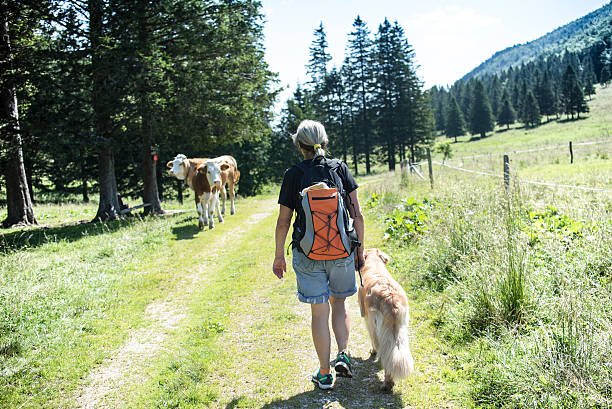
1. Daily Walks:
- Duration: 60-90 minutes per day.
- Frequency: At least two walks per day.
- Intensity: Varied pace, including brisk walking and occasional sprints.
Walking is not just a physical exercise for Hovawarts; it’s an opportunity for mental stimulation as they explore different scents and environments.
2. Playtime:
- Duration: 30-45 minutes per session.
- Frequency: Daily.
- Activities:
- Fetch: Utilize their retrieving instincts with a favorite toy.
- Tug-of-war: Provides both physical and mental stimulation.
- Interactive toys: Puzzle feeders or toys that dispense treats as rewards.
Playtime is a fantastic way to bond with your Hovawart while addressing their physical and mental needs.
3. Agility Training:
- Duration: 20-30 minutes per session.
- Frequency: Twice a week.
- Activities:
- Set up an agility course in your backyard or a designated area.
- Include jumps, tunnels, weave poles, and platforms.
Agility training not only enhances physical fitness but also engages their problem-solving skills.
4. Swimming Sessions:
- Duration: 20-30 minutes per session.
- Frequency: Once or twice a week.
- Considerations:
- Ensure a safe and dog-friendly swimming environment.
- Monitor their comfort level in the water.
Many Hovawarts enjoy swimming, and it’s an excellent low-impact exercise that also cools them off.
5. Hiking Adventures:
- Duration: 1-2 hours per hike.
- Frequency: Once a week.
- Terrain: Opt for trails with varied surfaces and natural obstacles.
Hiking provides both physical and mental stimulation in a different environment, keeping them engaged and excited.
6. Obedience Training Sessions:
- Duration: 15-20 minutes per session.
- Frequency: 3-4 times a week.
- Focus on:
- Basic commands.
- Advanced commands for mental stimulation.
Obedience training reinforces their bond with you and keeps their intelligent minds sharp.
Breed-Specific Considerations
Water Activities:
Given the Hovawart’s historical connection to water-loving breeds like the Newfoundland, incorporating swimming into their routine can be particularly enjoyable. It’s not only a great workout but also a refreshing way to engage them.
Mental Stimulation:
Hovawarts thrive on mental challenges. Puzzle toys, treat dispensers, and interactive games should be a regular part of their routine to prevent boredom and stimulate their intelligent minds.
Monitoring Intensity:
While these exercise recommendations provide a general guideline, always monitor your Hovawart’s individual needs. Factors like age, health, and temperament can influence their exercise requirements.
Conclusion
Crafting a well-rounded exercise plan for your Hovawart is not just about physical activity; it’s a holistic approach that caters to their intelligence, energy levels, and specific breed traits. Regular exercise not only keeps them physically fit but also contributes to their overall well-being, ensuring a happy and harmonious life with your Hovawart companion.
Nutrition and Feeding Guidelines
Proper nutrition is the cornerstone of a Hovawart’s well-being, influencing their health, energy levels, and overall longevity. Understanding their dietary needs, considering their size, age, and activity level, is crucial for responsible pet ownership. In this section, we’ll delve into specific dietary recommendations, potential dietary restrictions, feeding schedules, and portion control tailored to the Hovawart breed.
Dietary Recommendations:
Size, Age, and Activity Level Considerations:
1. Size:
- Puppy Stage (Up to 12 months): During this critical growth period, Hovawart puppies require a diet rich in protein, essential fats, vitamins, and minerals to support proper development. Choose a high-quality puppy food designed for large breeds to ensure the right balance of nutrients without excess calories.
- Adult Stage (1 to 7 years): Adult Hovawarts benefit from a well-balanced diet that supports their energy needs. Look for dog food labeled as suitable for large breeds, taking into account their potential for joint issues. Protein content should remain high, sourced from quality animal proteins.
- Senior Stage (7 years and older): As Hovawarts age, their metabolism may slow, and they may become less active. Transition to a senior dog food formula that addresses their changing nutritional requirements. These formulations often include joint-supporting ingredients and controlled calorie content.
2. Activity Level:
- Highly Active Hovawarts: If your Hovawart is actively engaged in activities such as agility, obedience training, or other forms of exercise, consider a dog food formulation tailored to active breeds. These diets often contain higher protein and fat content to fuel their energy needs.
- Moderately Active or Senior Hovawarts: For less active individuals or seniors, a diet with slightly reduced calorie content can help prevent weight gain. Look for formulations with joint-supporting supplements like glucosamine and chondroitin.
Dietary Restrictions and Allergies:
While Hovawarts are not known for specific dietary sensitivities, individual dogs may have allergies or intolerances. Monitor your dog for signs of adverse reactions to certain ingredients, such as itching, gastrointestinal upset, or changes in coat quality. Common allergens include:
- Grains: Some dogs may be sensitive to grains like wheat, corn, or soy. Consider grain-free or limited-ingredient diets if you observe signs of grain intolerance.
- Proteins: Occasionally, dogs may have allergies to specific protein sources. If you suspect a protein allergy, try alternative protein options such as lamb, fish, or novel proteins like venison.
Feeding Schedule:
Establishing a consistent feeding schedule is beneficial for Hovawarts. Adult Hovawarts are generally fed twice a day, while puppies may require more frequent meals. Avoid free-feeding to prevent obesity, as Hovawarts have a propensity to gain weight. Follow these general guidelines:
- Puppies (Up to 6 months): Feed three meals a day, gradually transitioning to two meals as they mature.
- Adults (6 months to 7 years): Provide two well-balanced meals daily.
- Seniors (7 years and older): Continue with two meals, adjusting portion sizes to accommodate lower activity levels.
Portion Control:
Maintaining an appropriate weight is crucial for the Hovawart’s overall health, especially considering their susceptibility to joint issues. Follow these tips for effective portion control:
- Use Feeding Guidelines: Refer to the recommended feeding guidelines on the dog food packaging. Adjust portions based on your Hovawart’s individual needs, considering factors like activity level and metabolism.
- Monitor Weight: Regularly assess your dog’s body condition and adjust portions accordingly. A healthy weight contributes to joint health and overall well-being.
- Treats in Moderation: While treats are excellent for training and bonding, be mindful of their calorie content. Factor treat calories into the daily food allowance to prevent overfeeding.
- Consult Your Veterinarian: If you’re unsure about the right portion sizes or if your Hovawart has specific health concerns, consult your veterinarian. They can provide personalized guidance based on your dog’s unique needs.
In conclusion, a well-balanced diet is fundamental to ensuring the Hovawart’s health and vitality. Tailoring their nutrition to their size, age, and activity level, while being attentive to potential allergies, sets the foundation for a happy and thriving canine companion. Combine proper nutrition with regular veterinary check-ups, and you’ll be well on your way to providing the best possible care for your majestic Hovawart.
Personal Stories and Testimonials:
1. A Loyal Companion in Every Adventure:
One Hovawart owner, Sarah, shares her heartwarming experience with her beloved canine companion, Max. Max, a Hovawart with a striking black and gold coat, entered Sarah’s life as a playful puppy. From the very beginning, Max showcased the breed’s intelligence and quick learning abilities.
“Max has been an integral part of our family for five years now,” says Sarah. “He’s not just a pet; he’s a friend who joins us in every adventure. Whether it’s a hike in the mountains or a lazy day at home, Max’s enthusiasm and loyalty never waver.”
Sarah emphasizes Max’s protective instincts, recalling an incident where Max alerted the family to a potential danger during a late-night walk. “His watchfulness and quick reaction truly amazed us. It’s like he understands his role in keeping us safe,” she adds.
Despite Max’s imposing size, Sarah highlights the gentle nature that defines the Hovawart breed. “He’s especially gentle with our children. It’s heartening to see the bond they share. Max is not just a guardian; he’s a playmate and a source of comfort for the kids.”
Sarah’s testimonial exemplifies the Hovawart’s versatility—being both a vigilant protector and a loving family member.
2. Overcoming Challenges and Building Trust:
Jake, another Hovawart owner, shares his journey of overcoming challenges with his Hovawart, Luna. Luna, a striking blond Hovawart, joined Jake’s family as a rescue dog with a history of neglect. Despite initial challenges in building trust, Luna’s transformation into a loving and confident companion is a testament to the breed’s resilience.
“Luna had a rough start, and it took time for her to trust people again,” Jake explains. “Her intelligence played a crucial role in her rehabilitation. With positive reinforcement training and lots of patience, Luna gradually opened up and became an inseparable part of our lives.”
Jake emphasizes Luna’s adaptability, describing how she seamlessly integrated into their family dynamics. “Luna’s ability to adapt is remarkable. She’s not just a survivor; she’s a thriver. Her playful antics and affectionate nature brighten our days.”
This testimonial sheds light on the Hovawart’s capacity to overcome challenges and form deep connections, showcasing the breed’s emotional intelligence and resilience.
Cost of Owning a Hovawart:
Upfront Costs:
Initial Purchase or Adoption Fee:
- The cost of acquiring a Hovawart can vary widely. Reputable breeders may charge between $800 to $2,000 or more, depending on factors such as pedigree, lineage, and breeder reputation.
- Adoption fees for rescue Hovawarts are generally lower, ranging from $50 to $500.
Basic Supplies:
- Dog essentials such as a bed, crate, bowls, collar, leash, and toys can cost approximately $200 to $500 initially.
- Microchipping and Identification:
- Microchipping is a crucial aspect of responsible pet ownership and may cost around $50 to $100.
Spaying/Neutering:
- The cost of spaying or neutering your Hovawart, if not already done by the breeder or rescue, can range from $200 to $500.
Veterinary Initial Visit:
- The first veterinary visit for vaccinations, a general health check, and preventive medications can cost around $100 to $300.
Ongoing Expenses:
Food Costs:
- High-quality dog food suitable for a large breed like the Hovawart can cost approximately $50 to $100 per month.
Routine Veterinary Care:
- Annual check-ups, vaccinations, and preventive medications may amount to $200 to $500 per year.
- Grooming:
- Regular grooming, including brushing, ear cleaning, and nail trimming, can cost around $50 to $100 per month.
Training Classes:
- Enrolling in obedience classes or hiring a professional trainer may incur costs ranging from $200 to $500.
Pet Insurance:
- Pet insurance, recommended for unexpected medical expenses, can vary but is generally around $30 to $50 per month.
- Toys and Miscellaneous:
- Budgeting for toys, treats, and miscellaneous items may add an extra $20 to $50 per month.
- Emergency Fund:
- It’s advisable to set aside an emergency fund for unexpected veterinary expenses, with a recommended amount of $500 to $1,000.
Importance of Budgeting:
Owning a Hovawart is a rewarding experience, but it comes with financial responsibilities. Budgeting for your dog’s needs ensures their well-being and allows you to provide the care, nutrition, and veterinary attention they require. Beyond the initial costs, ongoing expenses should be factored into your monthly budget to guarantee a happy and healthy life for your Hovawart.
In conclusion, the cost of owning a Hovawart involves both upfront expenses and ongoing commitments. While the initial investment is significant, the joys and companionship a Hovawart brings to your life make it a worthwhile journey. Responsible ownership, coupled with financial planning, ensures that your majestic Hovawart thrives in a loving and caring environment.
10. Grooming and Care for Your Hovawart:
Caring for a Hovawart involves more than just providing food and shelter; it requires attention to grooming needs and overall well-being. Here’s a comprehensive guide to keeping your Hovawart happy, healthy, and looking its best.
Grooming Essentials:
Brushing:
- Frequency: Regular brushing is crucial to prevent matting and maintain a healthy coat. Aim for at least 2-3 times a week.
- Tools: Invest in a good-quality slicker brush and a comb to remove loose fur and prevent tangles.
- Technique: Brush through the entire coat, paying extra attention to areas prone to matting, such as behind the ears and under the legs.
Bathing:
- Frequency: Hovawarts don’t require frequent baths. Aim for a bath every 2-3 months or as needed.
- Shampoo: Use a mild dog shampoo to avoid stripping the coat of its natural oils.
- Drying: Thoroughly dry the coat to prevent skin issues. A blow dryer on a low setting can be helpful, especially in colder months.
- Ear Cleaning:
- Frequency: Check and clean the ears weekly.
- Products: Use a veterinarian-recommended ear cleaner and cotton balls.
- Technique: Gently wipe the ears, avoiding the ear canal. If there’s an excess buildup of wax or debris, consult your vet.
- Nail Trimming:
- Frequency: Trim nails every 2-4 weeks, depending on how quickly they grow.
- Tools: Use a dog nail clipper or grinder.
- Caution: Be mindful of the quick (the blood vessel inside the nail). If in doubt, seek guidance from your vet or a professional groomer.
Coat-Specific Care:
Weather Protection:
- Cold Weather: In colder climates, consider a doggy sweater to keep your Hovawart warm during walks.
- Hot Weather: Provide shade and access to water to prevent overheating. Consider a summer cut if temperatures are consistently high.
Shedding Management:
- Hovawarts have a moderate shedding level. Increased brushing during shedding seasons can help manage loose fur and reduce the amount of hair around your home.
General Health and Care Tips:
Nutrition:
- Feed a balanced, high-quality dog food suitable for your Hovawart’s age, size, and activity level.
- Consult your vet for recommendations on supplements if needed.
Regular Veterinary Check-ups:
- Schedule routine check-ups to monitor your Hovawart’s overall health.
- Stay up-to-date on vaccinations and discuss preventive measures for common breed-specific health concerns.
- Training and Mental Stimulation:
- Engage your Hovawart’s sharp mind with regular training sessions.
- Provide mentally stimulating toys and activities to prevent boredom.
Recommendations for Accessories:
Grooming Tools:
- Slicker brush and comb for regular coat maintenance.
- Deshedding tools during shedding seasons.
Harness:
- Invest in a sturdy and comfortable harness for walks, especially if your Hovawart tends to pull.
- Toys:
- Interactive toys to stimulate their intelligence.
- Chew toys for dental health and to satisfy their natural urge to chew.
Dog Bed:
- Provide a comfortable bed to support your Hovawart’s joints, especially as they age.
ID Tag and Microchip:
- Ensure your Hovawart has proper identification, including an ID tag with your contact information and a microchip for added security.
Final Thoughts:
Caring for a Hovawart is a rewarding experience that involves a combination of grooming, nutrition, and overall attention to their well-being. Regular grooming not only keeps them looking their best but also contributes to their health and happiness. Remember to tailor your care routine to your Hovawart’s individual needs and consult with your veterinarian for personalized advice.
Choosing and Adopting a Hovawart Dog Breed
The decision to bring a Hovawart into your life is a significant one, and it comes with responsibilities and rewards. Whether you choose to adopt from a rescue organization or purchase from a breeder, understanding the process and preparing for the arrival of your new companion is crucial.
Reasons for Adoption:
Benefits of Adopting a Hovawart:
- Giving a Second Chance: Adopting a Hovawart from a rescue or shelter gives a deserving dog a second chance at a loving home. Many Hovawarts end up in shelters through no fault of their own, and providing them with a caring environment is both noble and rewarding.
- Known Personality: In many cases, rescue organizations have information about the dog’s personality and behavior, making it easier to find a good match for your lifestyle.
- Avoiding Puppyhood Challenges: Adopting an adult Hovawart allows you to bypass the challenges of puppyhood, such as housebreaking and teething. You get a mature companion whose personality is already evident.
- Rescue Satisfaction: The satisfaction of knowing you’ve made a positive impact on a dog’s life is immeasurable. You become a part of their journey to a better life.
Research and Preparation:
Understanding Hovawart Breed-Specific Needs:
- Exercise Requirements: Research the specific exercise needs of Hovawarts. They are an energetic breed that requires regular physical activity. Ensure that you can commit to providing the necessary exercise to keep them happy and healthy.
- Grooming Commitment: Consider the grooming requirements of the Hovawart, including regular brushing and maintenance of their dense coat. This breed sheds moderately, and regular grooming helps keep their coat in optimal condition.
- Training Challenges: While highly intelligent, Hovawarts can have an independent streak. Be prepared for consistent and positive training to ensure they grow into well-mannered companions.
- Space Considerations: Due to their size and energy levels, Hovawarts do best in homes with ample space, preferably with a fenced yard. Ensure your living situation can accommodate their need for physical activity.
- Time and Attention: Hovawarts are affectionate and thrive on human interaction. Ensure you have the time to spend with your new companion, providing both mental and physical stimulation.
Financial Responsibilities:
- Veterinary Care: Understand the potential veterinary costs associated with owning a Hovawart. Regular check-ups, vaccinations, and preventive care are essential for their well-being.
- Quality Nutrition: Invest in high-quality dog food tailored to the Hovawart’s size, age, and activity level. Good nutrition is crucial for their overall health.
- Grooming Supplies: Acquire the necessary grooming supplies, including brushes, nail clippers, and ear cleaning solutions.
- Training Tools: Invest in positive reinforcement training tools, such as treats and toys, to facilitate effective training sessions.
Adoption Process:
Steps to Adopting a Hovawart:
- Research Rescues: Look for reputable Hovawart rescues or breed-specific organizations. Ensure they have a positive reputation and prioritize the well-being of their dogs.
- Application Process: Most rescues have an application process. Fill out the application thoroughly, providing accurate information about your living situation, experience with dogs, and your commitment to caring for a Hovawart.
- Home Visit: Some rescues conduct home visits to ensure your living space is suitable for a Hovawart. Be open to this process, as it demonstrates the organization’s commitment to the well-being of their dogs.
- Meet-and-Greet: Arrange a meet-and-greet with the Hovawarts available for adoption. Observe their behavior and see if there’s a connection between you and the dog.
- Adoption Fee: Be prepared for an adoption fee. This fee often covers vaccinations, spaying/neutering, and other medical expenses incurred by the rescue.
- Post-Adoption Support: Reputable rescues offer post-adoption support. Take advantage of any resources or guidance they provide as you integrate your new Hovawart into your home.
Breeding and Ethical Considerations:
Responsible Breeding Practices:
- Health Screening: If you choose to purchase from a breeder, ensure they prioritize the health of their breeding dogs. Responsible breeders conduct health screenings to identify and address potential genetic issues.
- Genetic Diversity: Ethical breeders understand the importance of maintaining genetic diversity within the breed. They aim to produce healthy and well-balanced Hovawarts by avoiding excessive inbreeding.
- Lifetime Commitment: Responsible breeders are committed to the well-being of the dogs they bring into the world. They often have a comprehensive adoption process and may include clauses in contracts that stipulate the dog must be returned to them if the owner can no longer care for it.
- No Puppy Mills: Avoid purchasing from puppy mills or backyard breeders who prioritize profit over the well-being of the dogs. These operations often lead to health and behavioral issues in the dogs they produce.
Final Thoughts:
Choosing and adopting a Hovawart is a rewarding journey that requires careful consideration and preparation. Whether you opt for adoption or purchase, the key is to prioritize the well-being of the dog and commit to providing a loving and supportive home. With the right research, preparation, and ethical choices, your journey with a Hovawart can be a fulfilling and lifelong companionship.
Frequently Asked Questions (FAQs):
Q: Are Hovawarts suitable for apartment living?
A: While Hovawarts are a large breed, they can adapt to apartment living with proper exercise. Regular walks and play sessions are crucial to meet their energy needs.Q: Do Hovawarts get along with other pets?
A: With early socialization, Hovawarts can coexist with other pets. Their protective instincts may require careful introductions, but they can become great companions to other animals.Q: What makes Hovawarts good family pets?
A: Hovawarts are known for their loyalty and affection towards their human family. They form strong bonds, are good with children, and make reliable watchdogs.
Q: How often should I groom my Hovawart?
A: Regular grooming is essential for Hovawarts. Brush their long, dense coat a few times a week to prevent matting, and include routine ear cleaning and nail trimming in their grooming regimen.Q: Are Hovawarts easy to train
A: Yes, Hovawarts are highly intelligent and trainable. Positive reinforcement methods work best, and they often excel in obedience training and tasks that challenge their sharp minds.Q: Do Hovawarts have specific dietary requirements?
A: Providing a balanced and nutritious diet is crucial for Hovawarts. High-quality dog food, tailored to their size, age, and activity level, ensures optimal health.
Q: Are Hovawarts prone to specific health issues?
A: While generally healthy, Hovawarts may be prone to hip dysplasia and certain heart conditions. Regular veterinary check-ups and preventive measures are important for their well-being.Q: How much exercise do Hovawarts need daily?
A: Hovawarts have high energy levels and require daily exercise. Vigorous walks, play sessions, and mentally stimulating activities help keep them physically fit and mentally engaged.Q: Are Hovawarts good with children?
A: Yes, Hovawarts are known for being good with children. Their gentle and patient nature, combined with protective instincts, makes them ideal family companions.
Q: Do Hovawarts drool excessively?
A: The drooling tendency of Hovawarts is not well-documented. While some individuals may drool more than others, it’s generally not a characteristic feature of the breed. Regular grooming can help maintain cleanliness.
These FAQs aim to provide comprehensive insights into various aspects of Hovawart ownership, addressing concerns related to living conditions, grooming, training, health, and compatibility with families and other pets.
Conclusion
In this exploration of the Hovawart, we’ve uncovered the regal majesty and versatile nature that define this exceptional breed. Let’s recap the essential information covered in this comprehensive guide, focusing on the Hovawart’s characteristics, historical significance, care requirements, and the importance of responsible ownership.
Hovawart Characteristics Recap:
- Size and Stature: The Hovawart is a large and robust breed, weighing between 55 to 90 pounds. Their impressive size reflects their historical roles as guardians and working dogs, showcasing strength and agility.
- Temperament and Intelligence: Renowned for their unwavering loyalty, Hovawarts are devoted companions with high intelligence. Their quick problem-solving abilities and understanding of their owner’s needs make them highly trainable.
- Family-Friendly Nature: Despite their protective instincts, Hovawarts exhibit a gentle and affectionate side, especially towards children. They actively participate in family activities, forming strong bonds with all family members.
Selecting the Right Breed:
Choosing a dog breed that aligns with your lifestyle is crucial. The Hovawart offers a compelling option for those seeking a loyal and versatile companion.
- Exercise and Energy Requirements: Hovawarts thrive in environments where they can expend their high energy levels. Regular exercise, including vigorous walks and mentally stimulating activities, is essential to keep them physically fit and mentally engaged.
- Grooming Needs: With their long, dense, weather-resistant coat, regular grooming is necessary to maintain optimal health. Brushing, ear cleaning, and nail trimming contribute to their overall well-being.
Hovawart: A Heritage of Strength and Utility
Historical Significance:
- Guardian Instincts: The Hovawart’s historical role as a guardian is deeply ingrained in its temperament. They exhibit a natural protective instinct, making them vigilant and reliable guardians of their home and family.
- Utility on Farms: Beyond protection, Hovawarts showcased versatility on farms, from herding livestock to pulling carts. Their strength and intelligence made them indispensable working partners for farmers.
Evolution of the Breed:
- Selective Breeding: Over centuries, the Hovawart evolved through selective breeding, maintaining its distinctive characteristics while adapting to changing societal needs.
Caring for Your Hovawart Companion
- Nutrition: A balanced and nutritious diet tailored to size, age, and activity level is crucial for a Hovawart’s well-being.
- Regular Veterinary Check-ups: Routine check-ups, vaccinations, dental care, and preventive measures are essential for monitoring overall health.
- Training and Socialization: Positive reinforcement training and early socialization contribute to a well-mannered and well-adjusted Hovawart companion.
Understanding the Hovawart Breed’s Traits
Physical Characteristics:
- Size: Large and well-proportioned, with a weight range of 55 to 90 pounds.
- Coat Type and Color: Long, dense, and weather-resistant coat in black, black & gold, or blond.
- Distinguishing Features: Expressive eyes, medium-sized drop ears, and an overall harmonious appearance.
Temperament Overview:
- Suitability as Family Pets: Excellent for families, forming strong bonds with all members.
- Interaction with Children: Patient and gentle, with protective instincts toward children.
- Compatibility with Other Pets: Can coexist with other pets with proper socialization.
Environment Needs:
- Space Requirements: Thrives in environments with ample space for physical activity.
- Temperature Sensitivity: Tolerant to cold weather, but precautions needed in warmer climates.
Common Behavioral Traits:
- Intelligence and Trainability: Highly intelligent and trainable, responding well to positive reinforcement.
- Protective Instincts: Strong protective instincts, requiring early socialization.
- Affectionate Nature: Affectionate with deep bonds to the family.
- Energy Levels: High energy levels necessitate regular exercise and mental stimulation.
- Watchfulness: Excellent watchdogs with a watchful nature, requiring balanced training to prevent excessive barking.
Conclusion:
In conclusion, the Hovawart is a breed that beautifully blends strength, intelligence, and devotion. Its rich history, coupled with its modern adaptability, positions it as a remarkable choice for those seeking a canine companion with regal majesty and utility. Whether as a guardian, a family pet, or a versatile working partner, the Hovawart leaves an indelible mark on the hearts of those fortunate enough to welcome them into their homes.
Responsible Ownership:
As we celebrate the Hovawart’s remarkable qualities, it’s essential to underscore the importance of responsible pet ownership. This includes providing proper care, engaging in positive training and socialization, and understanding the commitment involved in welcoming a Hovawart into your family.
Encourage Adoption:
Finally, we encourage readers to explore adoption options for the Hovawart. Many wonderful dogs are in need of loving homes, and adopting a Hovawart can be a fulfilling experience. Check local shelters, rescue organizations, and breed-specific rescues for more information on available Hovawarts and to learn more about this magnificent breed.
In embracing the Hovawart, we not only gain a loyal companion but also become stewards of a breed that has enriched the lives of countless individuals throughout history. May your journey with this majestic canine companion be filled with joy, companionship, and the timeless bond that exists between humans and their faithful four-legged friends.

